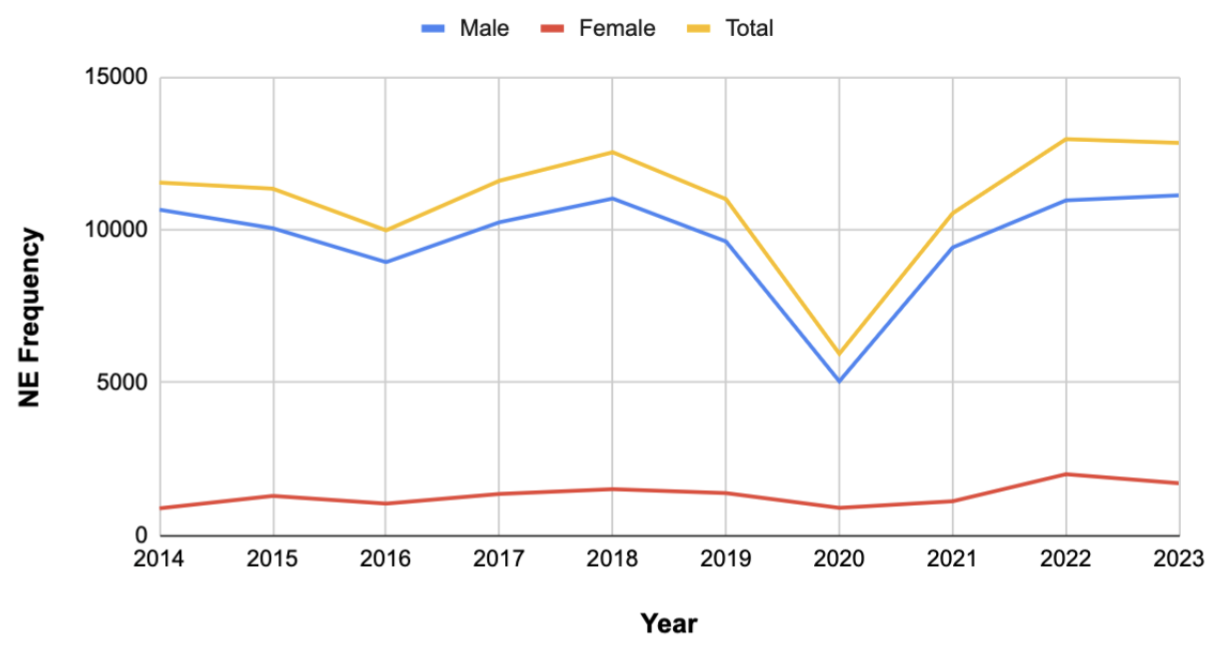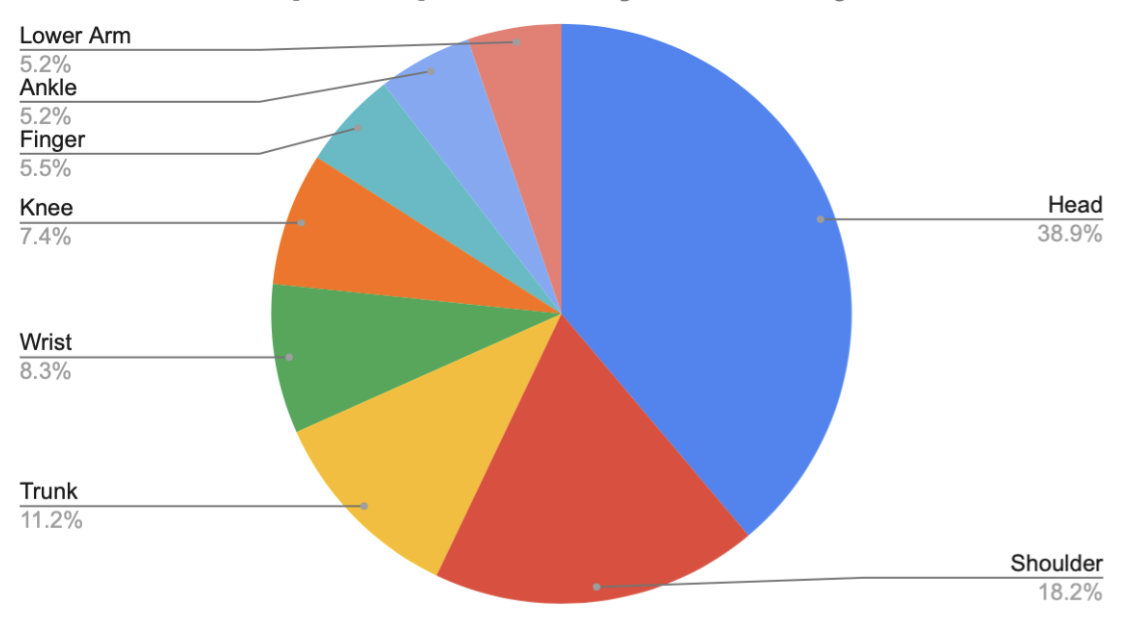Injury Prevention 1
Session: Injury Prevention 1
395 - An Analysis of Trends in Pediatric Hockey Injuries Presented to Emergency Departments in the United States: A 10-Year Review of National Injury Data
Sunday, April 27, 2025
8:30am - 10:45am HST
Publication Number: 395.3905
Luca M. Valdivia, Icahn School of Medicine at Mount Sinai, New York, NY, United States; Charu Jain, Icahn School of Medicine at Mount Sinai, New York, NY, United States; Auston R.. Locke, Icahn School of Medicine at Mount Sinai, New York, NY, United States; Sheena Ranade, Icahn School of Medicine at Mount Sinai, New York, NY, United States

Luca M. Valdivia, MS (he/him/his)
Research Assistant
Icahn School of Medicine at Mount Sinai
New York, New York, United States
Presenting Author(s)
Background: Ice hockey is a high-contact sport that can often put athletes, especially adolescents, at increased risk for injury. Youth hockey players still learning to properly play the sport tend to be much more prone to developing serious injuries. Now, with a strong resurgence of hockey after the pandemic, it is important to evaluate the safety of the sport.
Objective: The goal of this study was to examine the frequency and trends of hockey-related injuries presented to emergency departments (EDs) amongst United States (U.S.) youth.
Design/Methods: Ice hockey-related injuries presenting to U.S. EDs from January 1, 2014 to December 31, 2023 were queried using the National Electronic Injury Surveillance System (NEISS). For each injury, patient disposition, demographics, diagnosis, and injury site were recorded. National estimates (NE) were calculated using the NEISS statistical sample weight. Injury trends were evaluated by linear regression modeling.
Results: During the last 10 years, there were a total of 3,847 ED visits due to ice hockey-related injuries, which resulted in an NE of 110,293 injuries. Linear regression analysis displayed no significant trend in annual injuries for neither females (p=0.079) nor males (p=0.911). The frequency of injuries during 2014-2019 remained relatively the same, aside from a 46.0% decrease from 2019 (NE: 11,001) to 2020 (NE: 5,944), which returned to the original steady state by 2022 (NE: 12,963). The rate of hospitalization was steady across 2014-2022 with no statistically significant increases, yet we observed a sudden increase post-pandemic (p=0.109), where the rate dramatically rose from 0.1% to 5.6%. Dislocations (8.5%) and fractures (6.0%) had the highest rate of hospitalization amongst diagnoses. The most common injuries amongst all hockey players were injuries to the head (NE: 35,894, 38.9% of all injuries) and shoulder (NE: 16,836, 18.2% of all injuries). We also observed a rapid increase in head and shoulder injuries after 2020.
Conclusion(s): Although the overall number of injuries amongst youth hockey players did not change significantly over time, we see an accelerated increase in the head and shoulder injuries. Additionally, the hospitalization rate of these injuries has increased recently post-pandemic. These results highlight the recent growth in severity of ice hockey injuries, demonstrating the further need for improved regulations and safety measures in the sport. The high and increasing frequency of head and shoulder injuries especially emphasizes the importance of proper protective equipment and safety in ice hockey to protect those parts of the body in youth.
The National Estimate (NE) Frequency of hockey-related injuries presented to U.S. EDs by year between 2014-2023.

Percent Distribution of the top eight ice hockey-related injuries presented to U.S. EDs between 2014-2023.

Rate of hospitalization for ice hockey-related injuries presented to U.S. EDs by year from 2014-2023.
.png)

